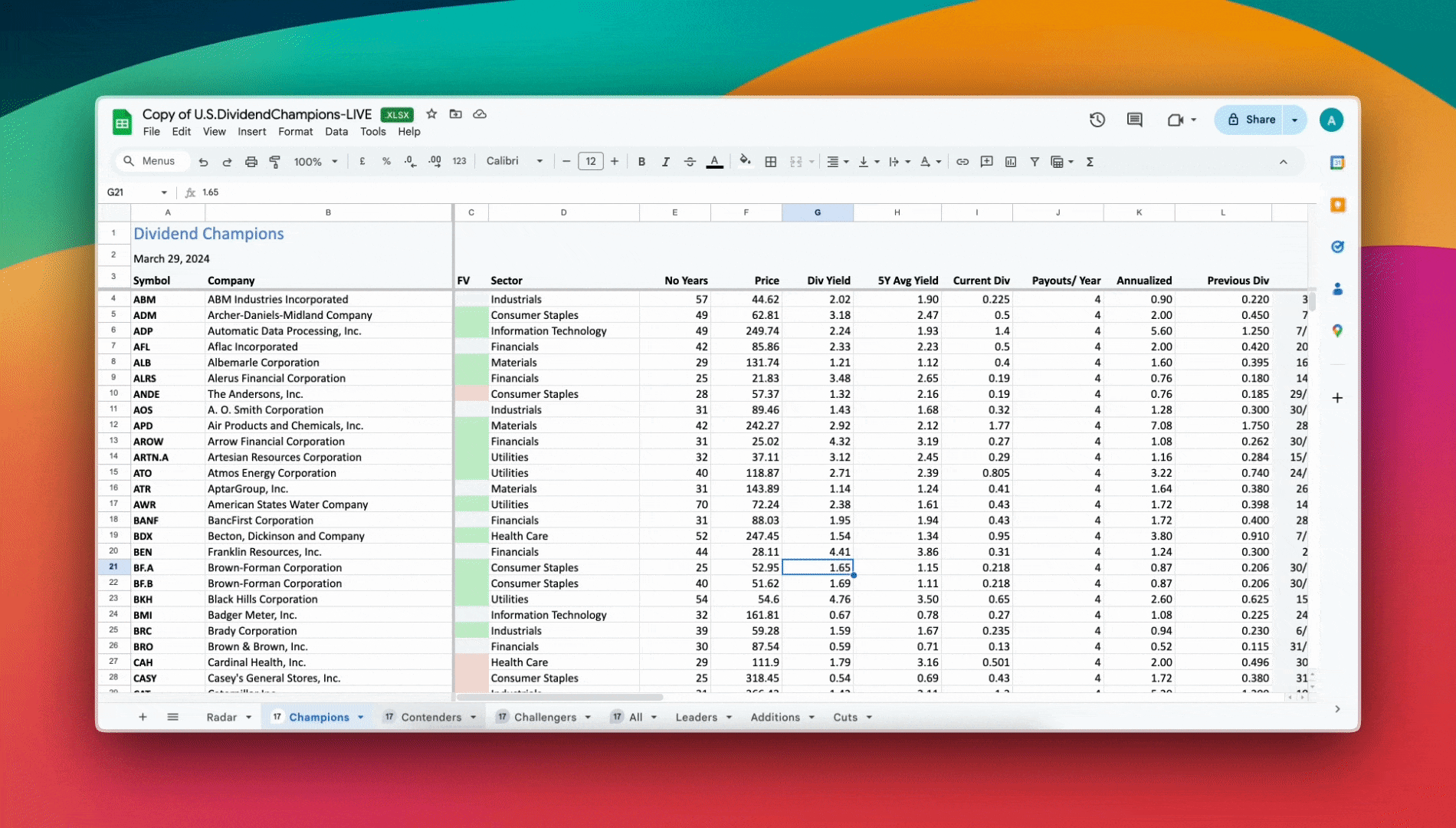Understanding the definition of the dividend yield is the easy part, what it means to the dividend investor is a matter of the current inflation rate and the reasons for purchasing a company.
When evaluating stocks there are many metrics that can be used, some have great importance, and others have importance only in specific cases. The dividend investor looks at the yield to understand what their cut of the proceeds will be.
Understanding the definition of the dividend yield is fairly simple, understanding what the yield means to the investor is another issue.
The dividend yield is the amount of the annual dividend payment divided by the stock price expressed as a percentage. For instance, one of my favorite companies, AFLAC, offered quarterly payouts in 2019 of 27 cents each, so for every share owned, $1.08 was returned as a dividend. AFLAC’s stock price, as I write this (21 Dec 19), is $53.14. So $1.08 / $53.14 *100 = 2.3%, the dividend yield.
As the dividend yield is a comparison with the price, if AFLAC’s stock price moves up to $60 then the dividend yield will fall to 1.8% or if the price drops to $50 then the yield will rise to 2.16%.
Related to this is the dividend payout ratio, which is also important to understand. The dividend payout ratio is a ratio of the total amount paid in dividends to the net income. When a company makes a profit, that money goes toward dividends, debt reduction, cash reserves, and reinvestment back into the company. The dividend payout ratio gives one an idea how much of the profit is being returned to the owners of the company, as opposed to being used for company purposes.
Understanding the implications of the dividend yield are much more difficult than understanding its definition. After all, dividend yield is just a number, but how does one know if it is a good number. And is there such a thing as a good dividend yield?
Unfortunately, the answer is one that we all too commonly hear – It Depends.
Reflexively one might think that the higher the dividend yield the better, after all, the higher the yield the higher the return. But reality pokes its finger into this thinking when one realizes that the highest average dividend yield ever was during the Great Depression, not one of the favorite times for investors.
Thinking about the reason for a dividend in the first place might offer a hint as to what a good yield might be. Companies oftentimes offer dividends to attract investors and create a demand for their stock. This means that the dividend yield needs to be attractive enough to convince the investor to purchase the company’s stock.
If one if looking for a place to put their money where it would offer a return, saving accounts and money market funds offer so little that the only value they have is that the funds are ensured not to go down. Of course, as of this writing the average money market interest rate is 0.18% and the inflation rate is 2.1%, so one actually loses about 1.9% with such an investment.
But that gives us an idea as to what the minimum dividend yield should be if one is purchasing the company solely for the dividend. If the dividend does not keep up with inflation then one could actually lose money while gaining it.
With the current inflation rate of 2.1% that might be a good starting point for what one might consider to be a “good” dividend yield.
However, as stated above, this would be the case for one who is purchasing only for the dividend. The company’s stock price should also be taken into consideration.
There is no magic formula for this – actually, some tout such formulas but I have seen these claims fall apart too many times. Due diligence for company selection is beyond the scope of this dividend website, but I can offer a bit of research I have found helpful.
Although past performance is no guarantee of the future (how many times have we heard that, and it is true), I do like to see where the company has been, and I will use the example of AFLAC.
Looking at the historical stock price of this company we can see that over the past 10 years the average annual return with dividends reinvested is about 11%. Since the company’s dividend yield is about 2% we can see that even if it was considerably lower, this would be an excellent company to select. The fact that AFLAC is a Dividend Champion gives one confidence that the dividend has an excellent chance of sticking around in the future, which also speaks to the stability of the company.
Comparing the dividend yield to the current inflation rate is a good starting point for one when considering the purchase of a company when the expectation of the dividend is a major reason for the purchase.
